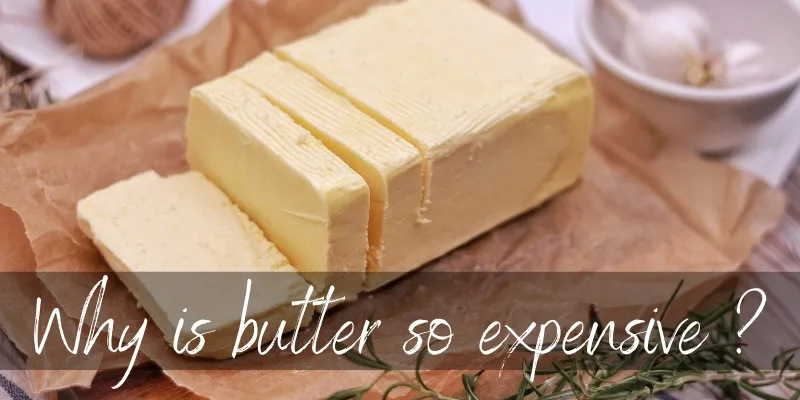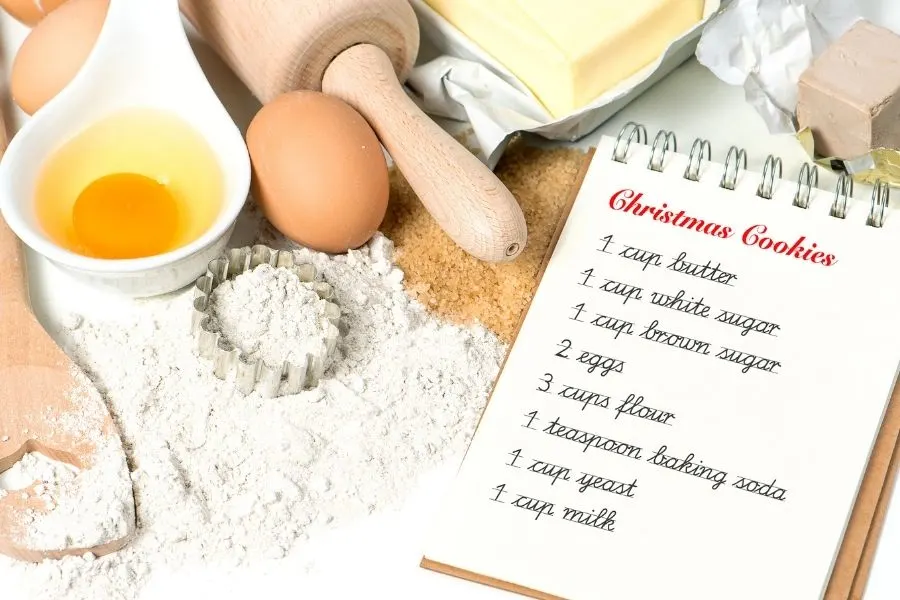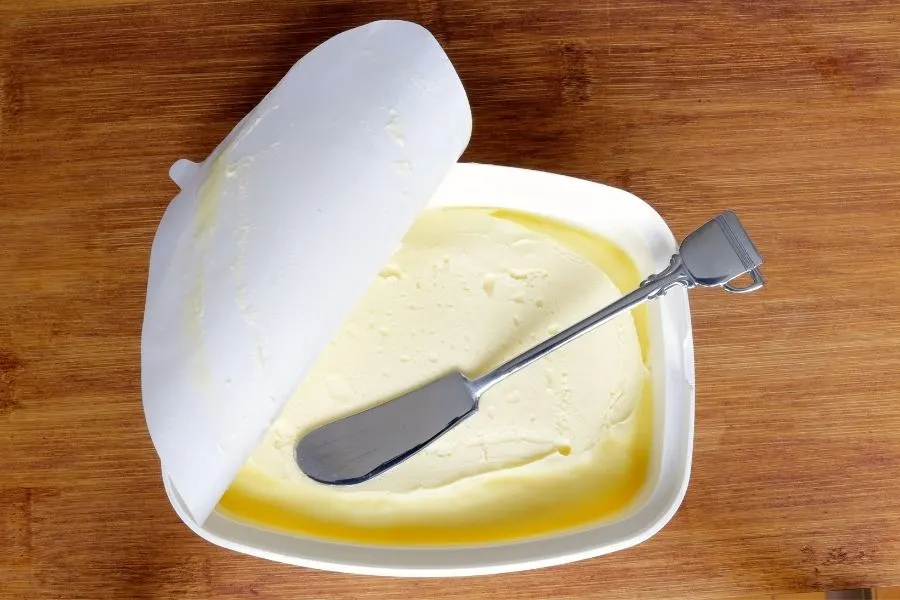If you use butter, you know just how much it can help improve flavor, texture, and smell in anything it touches. And even something as simple as toast is immediately made better with some delicious butter. So for something everyone uses too extensively, why is butter so expensive ?
After all, the more people use something and the more it goes into different products, it should be made widely available. The thing is, butter is widely available. But it’s more expensive than using margarine. So why is that ? Let’s take a look.

Why is butter so expensive ?
Butter is expensive because a lot of milk is needed to produce one stick of butter, about 32 oz of cream for a pound of butter. There’s also the fact that butter is used for many dishes, both sweet and savory, so there will always be demand, no matter the price. The cows matter too, because the quality of their milk and milkfat is directly tied to their stress levels and the quality of their feed.
In short, it’s a delicate situation where no matter what the price is for butter, people will always buy it, simply because it’s too delicious. But let’s take a closer look at what we just said, because it really needs some explaining.
1. A lot of milk goes into a stick of butter
When you make butter, you need cream. And for cream, you need milk. For milk you need cows. But let’s start with the milk itself. In a gallon of milk, you usually get 25% cream, and 75% skim milk. When the milk comes out, the fat is very well mixed with the whey.
But once the milk, still raw, settles for a few hours, you’ll notice the cream separating to the top. That cream is what is used to make butter. The rest of the milk ? Skin milk, in a best case scenario. Otherwise it’s not really useful, at least form a cheese or yogurt point of view because all the fat is gone, with the cream.
Read also: Why Is Butter Yellow ?
The, when making butter, the cream is churned for a while, until the fat separates, and the rest is just whey. And that fat is the actual butter itself ! So there you go, from a gallon of milk you’ve got a few ounces of butter.
Now imagine that on a larger scale, in a dairy farm. Each company has to decide how much milk it will use for butter (and wonder what to do with the watery non-milk), and how much it can use for cheese, yogurt, cream cheese, etc.
On average cheese sells for more than butter, so it would be more profitable to simply make cheese, in terms of how much milk you need. Still, people need butter and someone has to make it. So the farmers and the dairy companies simply have to raise the prices to cover any losses, and still make a profit.
2. Butter is crucial for most baked goods
And why do people need butter ? It’s the base for most cakes, pastries, pies, flaky doughs, sauces, omelettes, creams, and so on. Really, butter is in so many food items it’s hard to make them without it.
And when you try and make the same products without butter, the results are simply not as delicious. Consumers know this, and they continue using butter, thus keeping the current price afloat.

3. The cow feed matters for flavor
We mentioned earlier that you need cows for milk. They really need a good feed in order to get a lot of fat in their milk, and produce a good flavor in the butter.
The best results are usually found when cows are allowed to graze and are fed almost exclusively grass and hay. However commercial dairy farms have less green grass, and more hay and grains as the cow’s usual feed. Taking into account the vast amount of land needed to let so many cows graze, it kind of makes sense.
So, what does this mean for your butter ? The butterfat will still be there, at least 80% by USDA standards. But it may not taste as luxurious as butter from pastured cows.
Butter alternatives & how to better use it
So what’s left, what can you do ? If butter is too expensive to use frequently, you may want to stretch it a bit, or even replace it entirely in some cases. The following ideas are ways to replace butter, and how to use some of thee to stretch out the butter you do have.
Coconut oil
Coconut oil is actually a butter, in that it’s solid at room temperature, can be spread, and has a 80-90% saturated fat content. By comparison butter has a 80-82% saturated fat content.
So this coconut oil can be used in any way, shape, or form you would normally use butter for. The only difference is that butter has more proteins (milk solids) in its composition, which makes it thicker, or creamier at room temperature.
Margarine
Margarine may not be everyone’s favorite but it does one thing right: it spreads at room temperature, and even straight out of the fridge. It’s made up of vegetable oil, and a good potion of it is hydrogenated fats (saturated fats) so it has that look and feel.
Is it butter ? No. Does it taste like butter ? Not really. But it’s still a great deal of help when baking, lining pans, and making different creams.

Olive oil
As a stand-in for sauteeing fats, olive oil is a really great swap for butter. Extra-virgin olive oil is delicious and brings a beautiful color, but you cannot deep fry with it. Even so, you can find refined olive oil, and it ahs a high smoke point, just like clarified butter does.
Mix butter with another fat or oil
One of the things you can do to stretch out your butter is to mix it with a vegetable oil. Which oil you choose comes down to preference, flavor, and what you’re planning to do.
For example butter with extra virgin olive oil results in a good sauteeing medium, and a great spreadable butter. Butter and rice bran oil result in a slightly higher smoke point (you still have milk solids), and a more neutral flavor. It’s still a great spread.
Add some cream for extra flavor
If you’re all out of butter, or don’t have that much and need to supplement with oil, there’s hope. Replace part of the cooking liquid with heavy cream, and you get a very similar flavor to what butter can bring.
And that’s it, not you know why butter is so expensive – but worth the extra cost. Fortunately there are ways to stretch butter, or replace it entirely.

